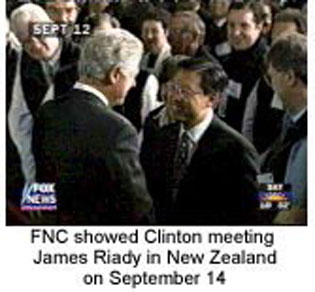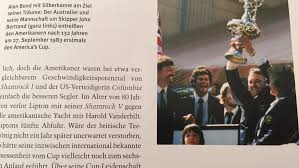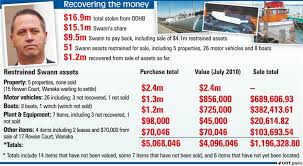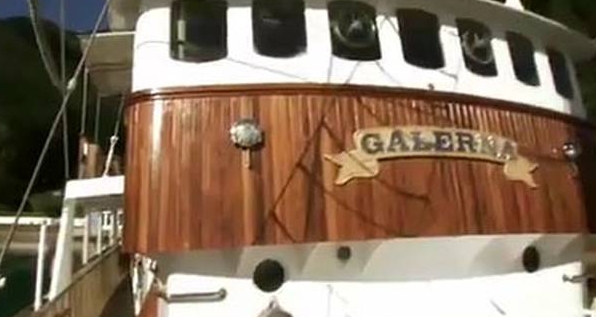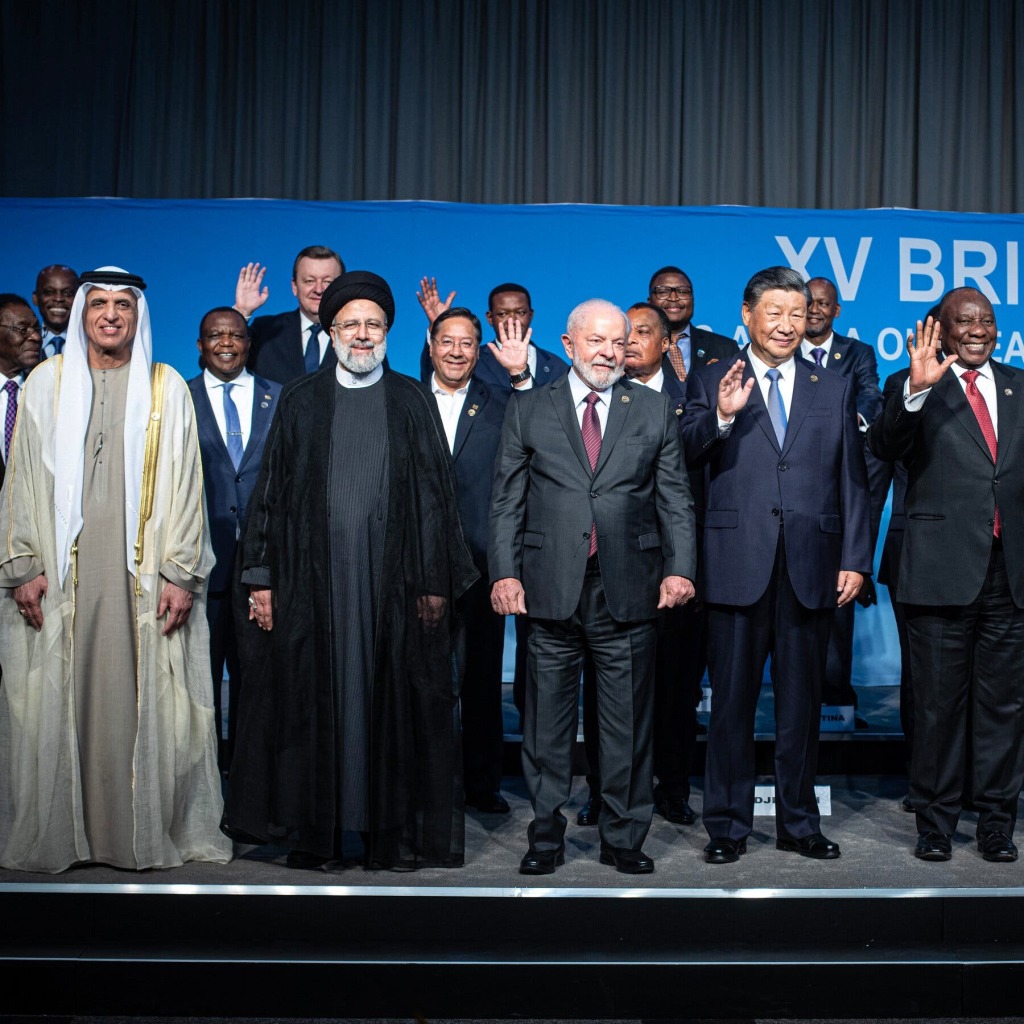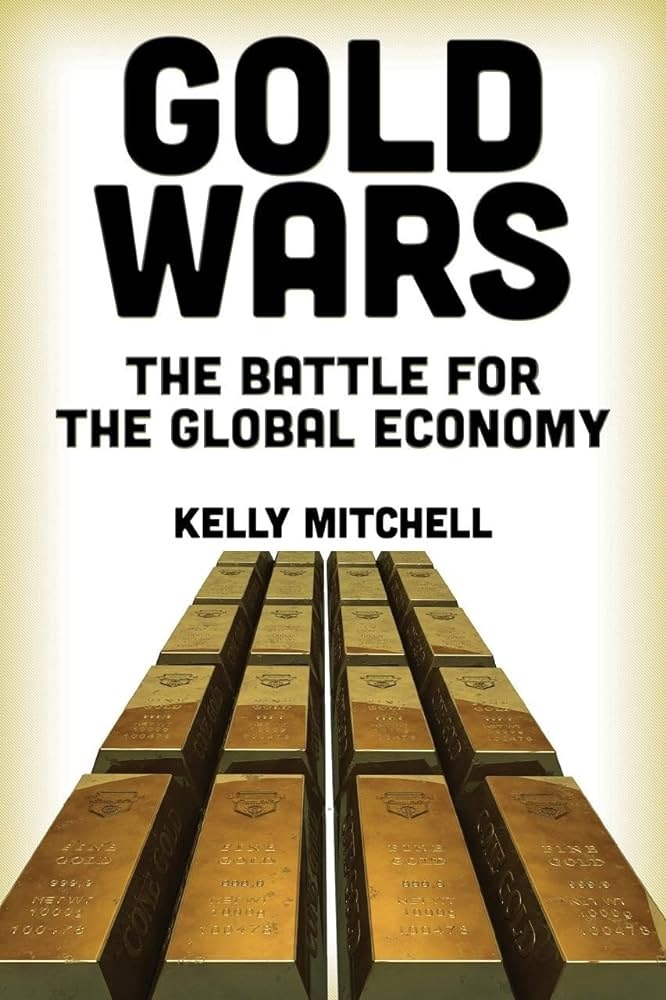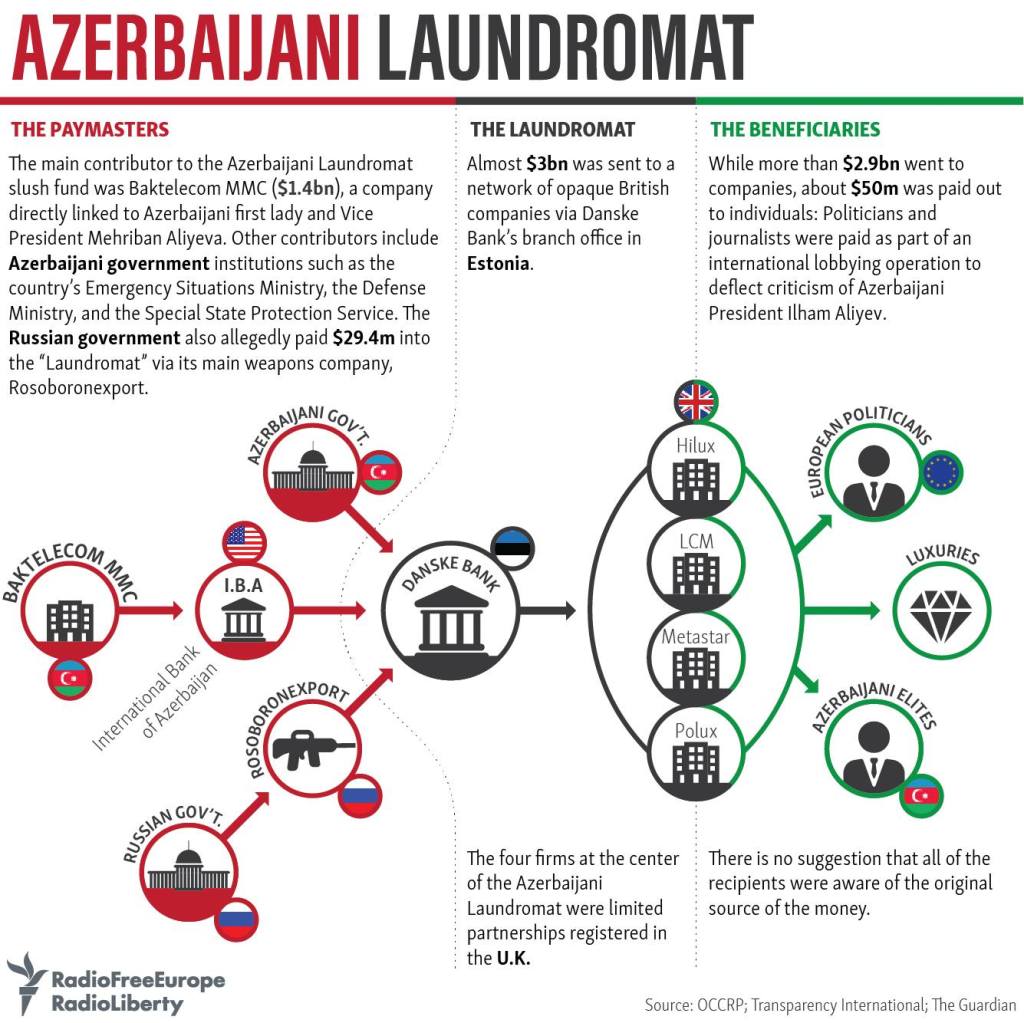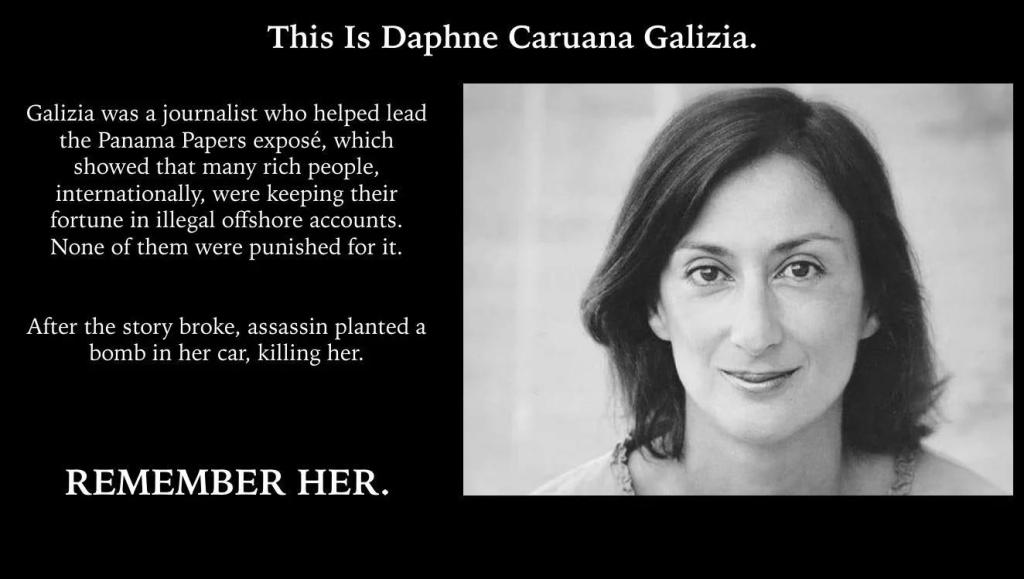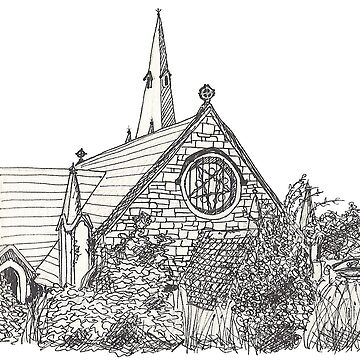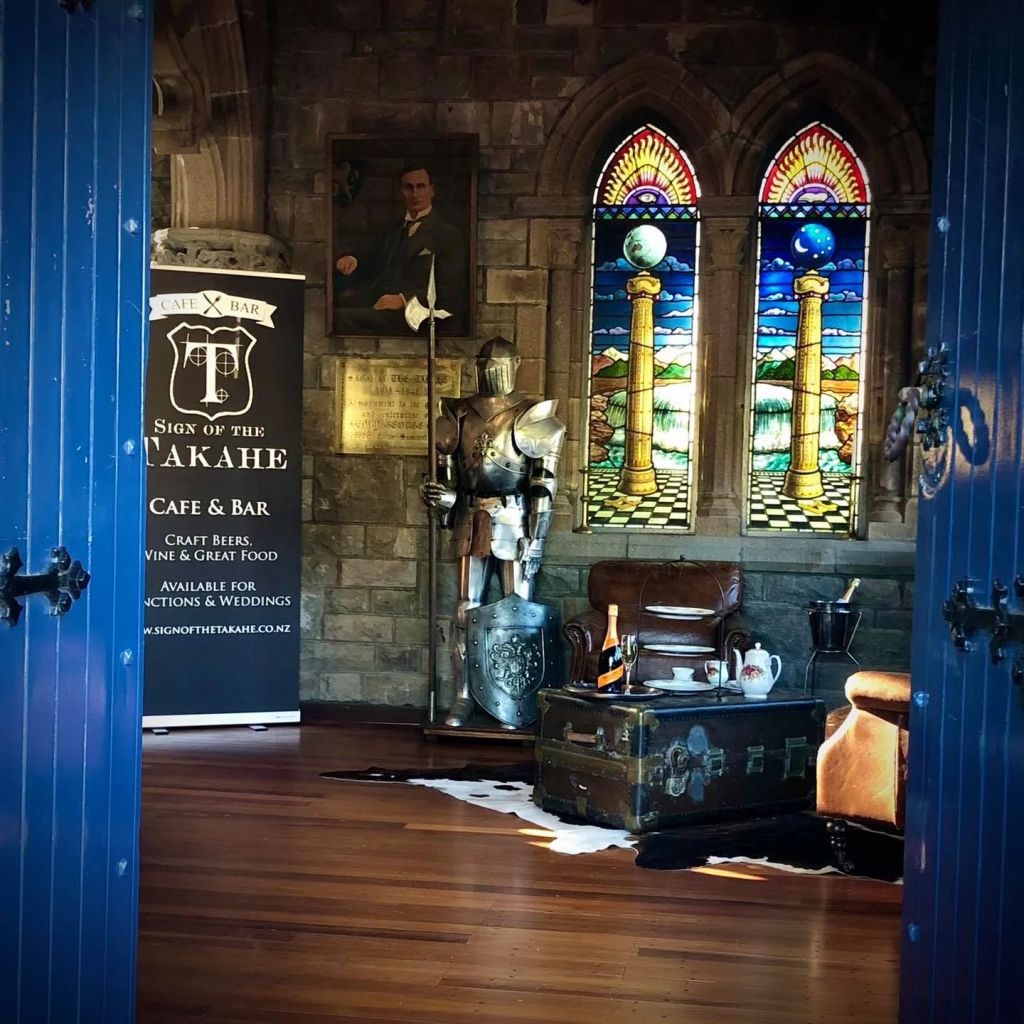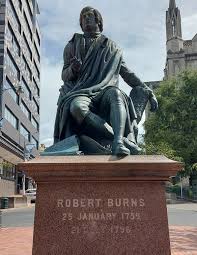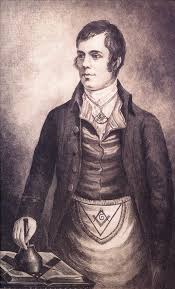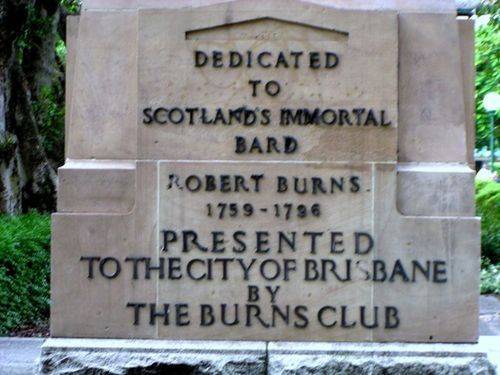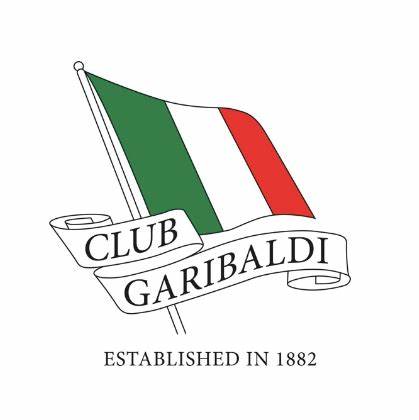The Deadline Report – Ben Vidgen Investigates.
Investigative journalist author Ben Vidgen presents a 30-minute show offering quality alternative media backed by quality documented information on the issues not hitting the headlines, but that should be. A double shot of reality, always educational if never pretty.
The Deadline Report airs on Sundays at 1:00pm and replays Friday nights at 7.00pm. Click here to listen to the podcast.
The Deadline Report – May 26 2024 ep118 – Mystery at Erie Bay.
The Deadline Report – May 12 2024 ep116 – Currumbin Wildlife Sanctuary – A salute to Dr Alex Griffith and the Aboriginal tribes of Queensland.
The Deadline Report – May 05 2024 – HAARP Down Under and Five Eyes Denial
The Deadline Report – Apr 28 2024 ep114 – Victor Billot why we need unions and solidarity
The Deadline Report – Apr 21 2024 – ep113 – Review of The Light a look at Australian alternative print news-paper.
The Deadline Report – Apr 14 2024 ep112 – How the Media Lost Its Way the double con that funding the media is bad (only when funding included setting the criteria) and then telling us corporates doing the same thing is okay
The Deadline Report – Apr 07 2024 ep111 – Kez Solomon + Coping with Grief pt2 a frank looks at loosing a loved one.
The Deadline Report – Mar 31 2024 ep110 – Kez Solomon + Coping with Grief pt1a frank look at loosing a loved one.
An Eyry Mystery Alistair Cassell & The Scot Watson Ben Hope — Oliva Smart — Dunedin connection 2008.
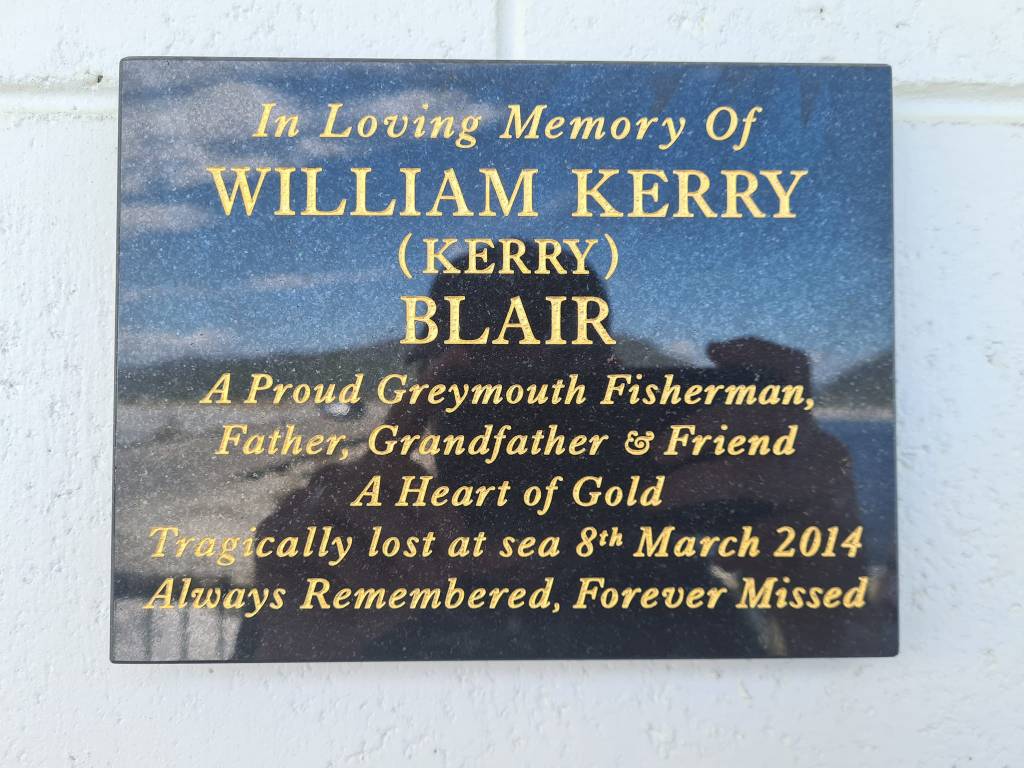
William Kerry Blair was last seen at property developer Alastair Cassels’ idyllic, remote 169-hectare Erie Bay property in the Marlborough Sounds in 2014 – where he worked for Cassels for eight years as engineer and skipper on his 27m luxury motor yacht, the Galerna – on Saturday March 8, 2014. The 9m aluminum Senator boat, also owned by Cassels and named Erie, which Blair had set off in for “fish n chips” that day, was found drifting 200km off the coast of Taranaki nine days later. Blair was not found on board. His body was never found.
During the inquest, both Cassels and Swann gave evidence, which the media notes the coroner found helpful to his inquiry -despite Cassels not answering a major question of how he knew to call 111 when phone record DO NOT support his claims he knew because he had been run before hand by concerned parties.
Cassells is the brother of Ian Cassell whose Shelly Bay land deal with iwi has been a subject of much controversy.
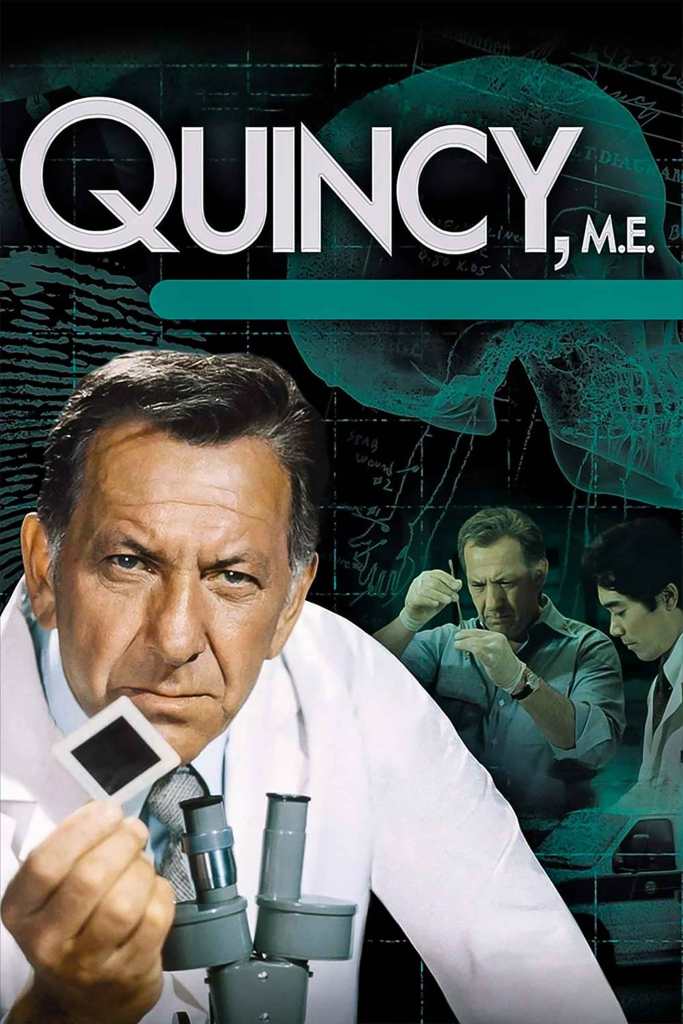
In New Zealand media has made much of the coroner’s findings that suggested Blair vanishing was not linked to foul play.
Such reporting is misleading and fails to illuminate the readers to the fact that coroners are generally not pathologist or investigators (despite what programs like Quncy MD may have us believe). And usually the coroner will simply follow the recommendation of investigating officer.
Officers whom in the history of post 70s NZ Crime some might refer to as the Usual Suspects (or alternately The Fiasco Squad). For the fact is that over the past half century the same officer involved in Blairs case and related cases, most prominent the Scot Watson Ben Hope Oliva Smart homicide, have appeared front in center in a staggering number of controversial cases. The‘Independent’ Police Complaint Authority (IPCA) has been anything but. Police left to operate in a manner where it could be argued those subjects to complaints (The Police) have been permitted to investigate themselves.
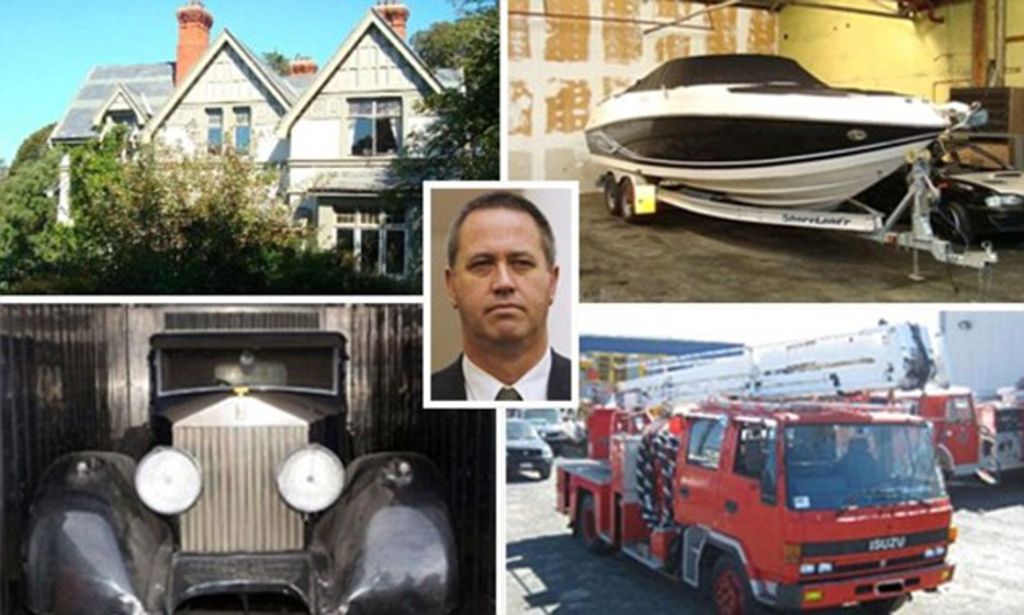
MICHAEL SWANN ‘MR MONEY BAGS’ & JUST A FEW OF HIS TAXPAYER FUNDED TOYS
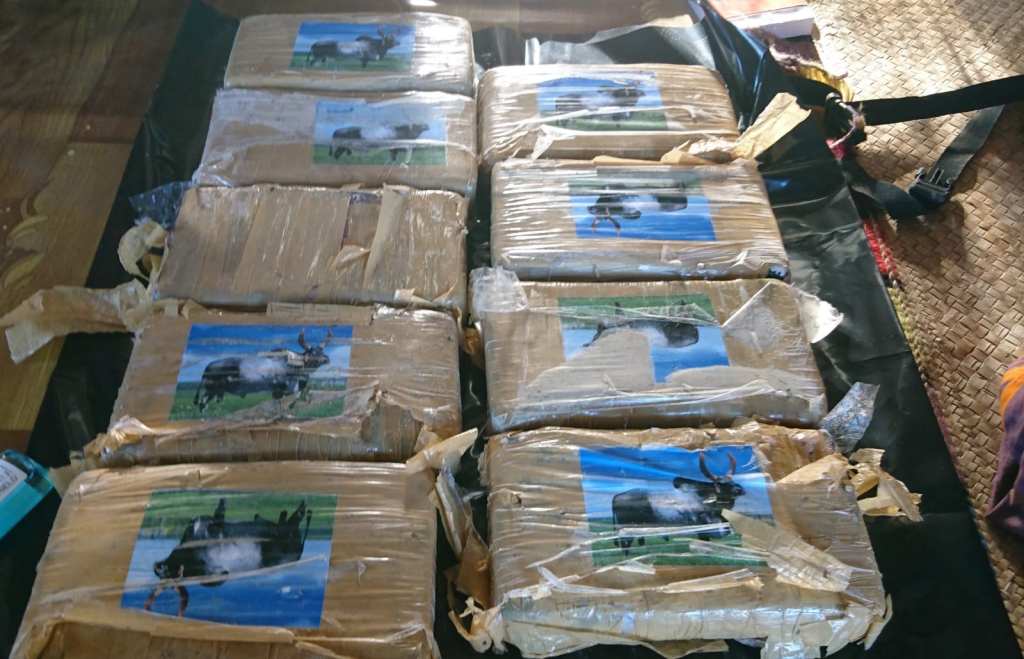
The New Zealand Defense Force has assisted Fiji authorities in recovering over 12 kgs of cocaine 2018 as Fiji – which has become a major cocaine hub supported financed by Chinese organized crime and Caucasian White Collar financial speculators from New Zealand and Australia.
According to Kerry Blair”s family, by 2013, Kerry was said to be concerned about the company Cassels was keeping. Kerry talked of hearing stories from his father of finding VHS videos on the Galerna with disturbing content, including bestiality, though he does not reply when asked was this was reported to thd police or raised at the inquiry. His relationship with Cassel, his boss, was so strained he would nearly vomit if he had to see him according to his flat mate Jacqueline Coplestone.
Initially, Kerry was in a sexual relationship with Coplestone, the caretaker for Cassels home in the bay. Yet by the time he disappeared, they were just flat mates, living in a cottage, that was also owned by Cassels. By late 2013, Copleston was now involved with Kerry Cassels’ friend convicted fraudster Michael Swann who, alongside associate Kerry Hartford, defrauded the Otago Health Board of at least 16.9 million. Much of that fortune spent on luxury cars, property, and real estate.
Michael Swann’s is the son of Jim Swann a former sales manager at Tablet Print, the 135-year-old firm that closed in 2007 as Geoff Wilding Pacific Print Group (supported by ANZ Private Equity) began a buy up of local print with co-investor John Spencer of Caxton printing. Wilding also began investing in a plethora of aviation transport firms in the mid 1980’s. Many of whom would later be proven to have narco, black market arms, or contra trafficking ties. The Spencer Dynasty is widely associated with mining, including Emperor Mining Fiji, who survey vessel Babale, smuggled the UZI used in the 1987 Fiji coup.
Many of Wilding’s associates, such as John Warburton, have subsequently been linked to organised crime. This includes The Gang of Twenty affair, which involved tax evasion on the GST paid for on yachts. Warbuton is also named in Operation All Sorts, a property scam tied to gangs and narco traffickers including the Hells Angels and the ‘Mr Asia’ heroin syndicate. The latter saw yachts’, tied to the syndicate, such as Brigadoon or boats belonging to Millstone Charters Ltd ferry marijuana and heroin from the Golden Triangle in Asia to markets in NZ and Australia in the 1970s and 1980s. These drugs would be distributed by the Hells Angel’s with their profits washed by mainstream banks, according to senior writer for the prestigious Wall Street Journal Johnthan Kwitney. Kwitney’s book on Australian New Zealand organised crime ties to politics and white-collar crime (Crimes of The Patriot), would win the coveted Pulitzer Award in 1985. In 2015 a year after Kerry death Operation A would lead to one of the largest seizures of marijuana at the time from growers based in Picton and Christchurch who grew marijuana on the islands in the sounds which was then transported down to Governors Bay in Lyttleton where Cassels and Swan lived.
While the last person to see Ben and Oliva Guy Wallace (who later committed suicide while facing an upcoming court case for past sexual assault allegations) would himself be known to have been selling marijuana on the night of the Ben and Olvia disappearance. In fact, a number of growers would be people of interest including Casels then caretaker who also had a conviction for growing.
The links between white collar crime, organised crime, cocaine narco trafficking and money laundering in the Pacific are only beginning to be fully understood today. Enlightenment follows the revelation of such leaks as the Paradise and Panama Papers plus the FINCEN laundering documents. The FINCEN files, identify a jaw dropping $US2 trillion in transactions between 1999 and 2017 that were flagged by financial institutions’ internal compliance officers as possible money laundering or other criminal activity. The document in the discovery of a Russian Antonov loaded with Arms in Korea in mid 2000, which have collectively led to the discovery of billions in Russian Triad and Mexican narco and black-market dollars washed through Pacific banks and the property markets of Australia – New Zealand.
US Treasury leak reveals dirty secrets of international money laundryA leak of US Government reports offers a rare insight into the secretive world of international finance. It shows how drug smugglers and scammers move dirty money via international banks — including through Australia’s financial systems.
JPMorgan $514,206,745,666
Top 10 banks by reported amount in FinCEN Files
Total amount disclosed by banks in suspicious activity reports found in the FinCEN Files
Bank Total
Deutsche Bank $1,310,771,379,656
Standard Chartered $166,139,835,277
Bank of New York Mellon $64,109,417,780
Barclays $21,677,582,233
Société Générale $8,485,904,902
HSBC $4,480,002,672
State Street Corporation $2,038,159,735
Commerzbank AG $1,768,874,172
China Investment Corporation $1,334,387,826
Source: FINCEN Files data / International Consortium of Investigative Journalists
Swan, previously married into a prominent Dunedin accounting family (The Devereux’s), who owned nightclubs and number of bars in Dunedin, was jailed in 2009. When he was released on parole in 2013, Swann went to live with Cassels in his Banks Peninsula mansion and visited Erie Bay on two weekends in October and November. During these visits, the fraudster began a sexual relation with Coplestone and invoked Kerry jealousy according to Coplestone. Kerry was also said by Dylan to have become irked that Swann would borrow his laptop without permission while he was there. The computer and its treatment by police would later become an issue following his disappearance. In Jail Swan, who earned the nick name ‘The Professor’ was visited by an extensive menu of prominent Dunedin residents such as Richard (Chet) Hatherley NZ honorary consul to Fiji in 2013 who gave Swann a dictionary and magnifying glass. Swan social circle would include those heavily involved in property development in Fiji including developments in a hotel and marine at Port Denarau Fiji.
Tabua Investments and Denarau Island investors included firms like Fay Richwhite Investments who in 1999 this author identified in my best seller States Secrets sequel, State Secrets 2, as an associates of cocaine trafficking king pin American Thomas Winer (Resulting in death threats 24 hours before my book hit the bookstores). It also included Brierly Investments led by convicted child abuser Sir Ron Brierly, Sir Clifford Skeggs a former commercial fisherman and mayor of Dunedin (who incidentally once walked out of a capping show held at Otago University win the 1980s after the comedy skit suggested Skeggs boats were used for narco-trafficking by the Mr. Asia drug cartel), and the late Howard Patterson another friend of Fiji’s honorary consul Chet Hathaway. Patterson died in Fiji in 2003 under controversial circumstances while holidaying in Fiji.
The Hotel and mariner complex Patterson were involved in in Denarau Fiji was originally owned by convicted Japanese Yakuaza money launders EIE Ltd. EIE prior to their crash own 90% of downtown Auckland Brisbane CBD. EIE eventual reincarnation Lippo Group, run by James Riday an identifiable asset of Chinese Military intelligence (and director in the money laundering bank BCCI), would end up taking possession of the Fijian resort following Patterson death. Lippos CEO James Riady, the Indonesian ambassador to Australia and New Zealand was a major donor of the Clinton Presidental family and director of the rogue bank BCCI who used Nadi airport Fiji as personal bond store for illicit cocaine and gold smuggling in the 1980’s at the peak of the Iran Contra affair which the rouge banks were also heavily involved in. Patterson Otago Trustee Company Ltd, directors include Dunedin businessmen Alistair Broad the brother of Howard Broad the former commissioner off the New Zealand police (named in the controversial Waynne Idour bestiality video allegations), and Greg Paterson, the administer of the estate of Howard Patterson, who would apply for the bankruptcy proceedings to the High Court at Dunedin in 2009 following Howard’s death.
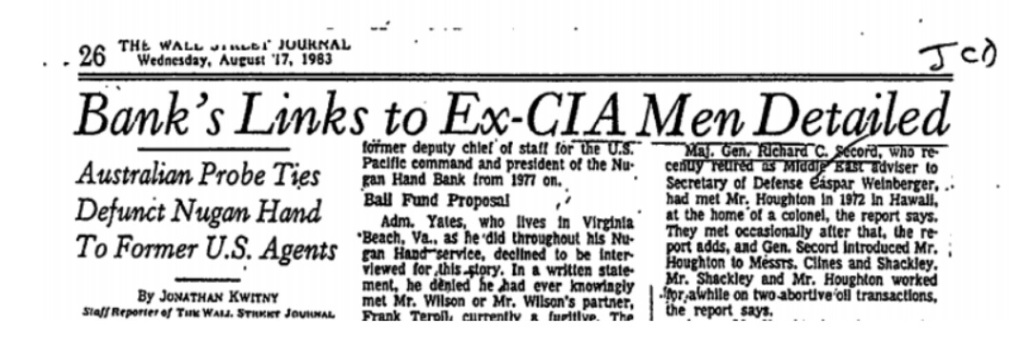
Patterson would be airlifted out of Fiji by his wealthy Dunedin friends, on a private plane, weekends at Bernie style. EIE had grown out of the collapse by Ariadne Australia Ltd one of the Australian speculators such as Bond and judge Corp tied to the narc tainted Nugan Hand Bank and a plethora of shady mining interest and 1980 corporate speculators that all emerged on the back of the 1983 America’s Cup yacht Race prior to the arrival of the Fay Richwhite and the 1987 stock market crash. An event which showed how many of these carpetbagger empires were built on dubious money and deceit. Again the Wine Box Paper would show a similar serious of transaction involving aviation deals underwritten by Japanese firms with Yakuaza ties and ABN Amro Group NV a bank later linked to a Russian money-laundering scheme alongside Rabo Bank and ING Groep NV, (led by what was Russia’s largest private investment bank Troika Dialog, who laundered €3.5 billion in Europe and the United States via two Lithuanian banks, Ukio Bankas and AB Bankas SNORAS) who had also underwritten deals put together by Wilding alongside Credit Suisse Citibank JP Morgan and Royal bank of Scotland who all feature large in the FINCEN documents,
For example, Judge and shady Japanese narco dollars were tied up in Harmony Securities (another Wine Box tax evasion star) one of the firms by which Bruce Judge, in collusion with dodgy Cook Islands offshore banks, used to swindle $70 million. (Replicating the Wine Box scam of 1990s).
Legal Vet News search notes co investor in Harmony Securities was Caxton Printing run by the Spencer Dynasty headed by John Spencer, an heir to his grandfather’s Caxton paper empire. Fijis 1987 coup supported by was largely made possible by the arrival mining survey ship a ship with Emperor Mining connections. The Babale cargo included Uzi machine guns. for the coup plotters. The largest shareholder in Emperor Mining? Technically the answer is Western Mining, the Australian firm. Yet the more specifically accurate answer is that Western Mining in fact manages the mines on behalf of a secret owner, held in trust of “ANZ nominee” who according to WPR1 {Wellington Peace Researcher) was in fact John Spencer and Geoffrey Wilding – partner in the buy up of print media in New Zealand and Australasia.
Swann’s assets, at the time of his arrest, included several proprieties and fleet of luxury boats and super cars (some of whom Swann seem to have brought and sold back to himself) while millions of dollars were never recovered. Officially the figure listed at his trial was 16.5 million. But its widely believed this figure was grossly underestimated as Dunedin financial house and major banks and local media collectively kept quiet during the trial and failed to comment on Swans numerous other contractors with Otago Health Board ties.
In August 2013, police found a 1922 Rolls-Royce Silver Ghost worth a substantial amount of money in a container at Port Otago. The car was recently spotted in the main street of Takaha as participant one of several recent luxury car rallies that have included routine stops at River Haven the cafe owned by celebrity Noel Edmondson, in Ngātīmoti village which comes complete with technology that reads the number plates of passing traffic.
Swann previously signed an affidavit in 2010 declaring he could “definitely say that there is nothing by way of hidden or missing property”. The fact that was not the case doesn’t seem to have impacted Swann parole terms. Dunedin police declined to comment about the matter when contacted by the media.
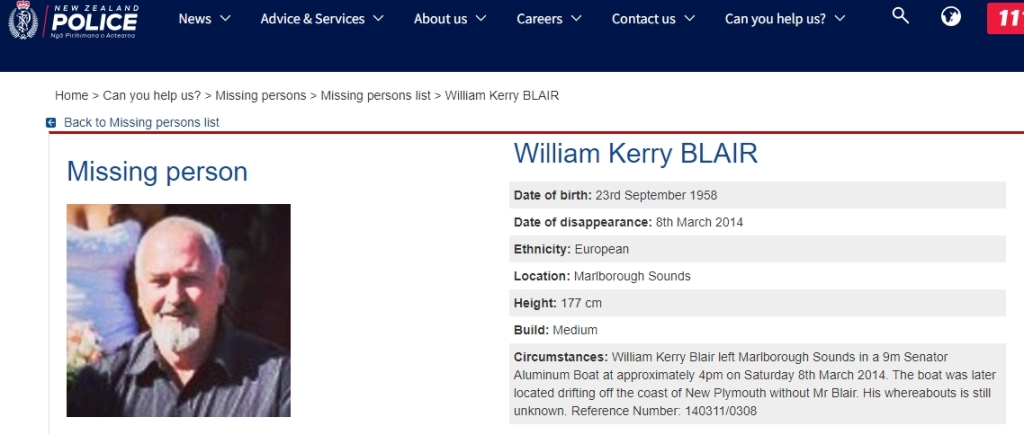
On the morning of March 8, 2014, according to police notes Coplestone, Kerry was suffering from violent pains in his back and kidneys and took Panadol and Neurofen. At 2pm she lunched with Kerry, who by then seemed “fine “. He told her he wanted to get fish and chips for tea. To do so he would have to take Cassels’ Senator boat, named Erie. At around 4pm Coplestone heard the Erie being turned on and “idling for a while” but didn’t see the boat or Kerry leave. Coplestone would later tell police it was strange that she was not invited to go out to tea with him. Usually if he says he is taking the boat out somewhere I will go.” Kerry was conscientious about letting her know when he had arrived at a destination, and always contacted her. But when he hadn’t returned later that evening, she rang him and left messages twice. The following morning after trying to reach him unsuccessfully on the phone she alerted the police. “He’s never gone away and not come back,” she would later tell police. “If he’s away he tells me.”

It was clear to Coplestone and his family that something was wrong. Dylan believes the palm print could belong to someone who knows something about what happened to his father. No blood was visible on the boat, and police decided not to do luminol or fiber testing due to water washing off all the surfaces – but it’s something Dylan thinks should have happened. Meanwhile it emerges the phone data which the police used to track the boat was provided by Cassells who had also helped put another of his employers Scot Watson in the spotlight for the Ben Hope Oliva Smart disappearances for which Watson was later convicted of homicide.
In1999 Cassel highlighted the strange reaction of Watson to having his boat the blade searched. And it was Cassel who had pointed out Watson’s eagerness to repaint the boat even noting he had used primer not suitable for the task. Cassel sacked Watson only days before the disappearance of Ben Smart (21) and Olivia Hope (17), who were last seen in Queen Charlotte Sound on New Year’s Day 1998. Police would charge Watson whom Casel said he had fired two days before for stealing though he then he also say he gave Watson money to buy a bottle of rum.
Police records show that Alastair Cassell called 111 in the case of Blair which he admitted at the inquest. However, he shortly stormed out, according to Dylan, when asked how he knew. Initially he said he was told by Coplestone but then became agitated and “threw a hissy” says Dylan when confronted with the fact there was no record of such call between Cassells and Coplestone. The next morning Cassels arrived with charts which showed where he believed Kerry had been based on phone pings provided by the police of Blair’s phone. Notwithstanding this still did not answer how Cassel knew Blair had gone missing or why he had called 111 to begin with.
It wasn’t unusual for people to disappear at sea, Cassels told the inquest. “I have had two people crewing for me on Galerna that have been taken by waves, not from Galerna but from other persons after they crewed for me on that boat. I mean, seamen do go missing on boats,“. Later, he added: “I’ve had one person taken by a wave and one person, um, went missing pulling an anchor up”.
An online search shows a skipper who used to be employed by Cassels at Erie Bay, disappeared at sea two years before Blair vanished named Richard Rusbatch’s. Rustbatch unmanned yacht Honfleur was found with the engine still running, doing circles in the Bay of Plenty, north of Tauranga, in February 2012. Dylan Blair identifies the third case as being a Swiss national but can’t find any further details on this man. There is reason to believe the number of missing people linked to Cassel exceed the five known cases to date. The most famous case however is the Ben Hope and Oliva Smart case which would take place in 1999 and become of one New Zealand most enduring missing person case.
Further on 14th of January 1998 a Tokoroa man named John Calver came forward to police, saying he’d just seen a picture of the mystery ketch police were looking for and he thought he had seen one like it in Wellington on New Year’s Day.
Here’s what his statement says:
“At about 1 pm on this date I was walking down by the wharf in Wellington. I am not sure of the name of the area but it is near the Maritime Museum.
During my walk I saw what I believe could be the blue ketch that the Police are looking for. It was moored at the wharf.

The boat I saw was blue, it had two masts. The masts and booms were metal. The boat was wooden. The stern was rounded. It had portholes along the side where the blue paint was. The boat had white paint on it also. It looked to be about 50 feet in length. This boat had the name Gallerna or Gaelerna carved in wood at the front of the cabin area.
Another thing I remember is that the boom at the rear of the boat was all black from exhaust smoke. I thought to myself at the time the design having the exhaust under the boom was a bad one. Parked behind this boat was a yacht named Faith. This yacht was smaller and lower. Across from it was a fishing trawler and the other side of that was a boat called Antarctica, it was a big white cruiser.
I have seen the sketch made of the boat Police are looking for and I believe the Gallerna / Gaelerna looks very similar to this. I have not come forward prior to today as I was not sure of the date that I saw it. It it assists at all the day I was there the Police launch came in with a large piece of driftwood on the back. I saw a male person on this boat wearing a white shirt. I don’t recall anything else about him, he was non descript. This person was sweeping broken glass in the centre of the boat, the glass was coloured green. Another male came off the boat called Faith and spoke with the person on the Gallerna / Gaelerna, he stood on the wharf beside the boat when they spoke. The Faith guy spoke to the other one and he replied. I do not recall what was said. From where I was it looked more like a question answer than an exchange of pleasantries. This second guy was reasonably tall with straight dark hair, thin face with a straight nose. I didn’t take much notice of these men. I think the second was wearing shorts. I stood looking at the Gallerna / Gaelerna for a good ten minutes because it intrigued me. It looked like the sort of boat that I would like to own.
(Signed) J G Calver 14.01.98 Statement taken and witnessed: S R Bullock Sergeant D28514.01.98″
Bullock is one of the police officers listed in the Justice Goddard report into the wide-ranging nepotism and culture of corruption that has existed within Dunedin’s CIB. Much of the CIB woes dating back to the 1970’s when New Zealand inherited a wave of former UK CIB officers in the 1970s. The UK imports follow a corruption purge in the UK which saw many suspected officers on the pay of organized crime suddenly immigrate to Australia Canada and New Zealand where they gained employment with local police force their past record overlooked. Similar imports into Australia Navy from the UK were later linked to related drugs rings corruption of Australian Customs of the 1990s following the Justice Stewart Commission.
Cassle’s himself was a suspect at one point (as was his caretaker) until he persuaded police Watson was better match having told people that the police had dug up his swimming pool in the bay looking for the two teen-ages bodies. In the days that followed Kerry vanishing, police took statements from Erie Bay residents and those in the area at the time Kerry went missing. Those that saw the boat leave the bay said they couldn’t see who was on it, except for a passenger and crew member on one boat who claimed they saw two people on board. The witness reports of locals seeing two people on the boat is again a repeat of the Scot Watson case where police (many specifically later censored for their creative notebook taking and contamination of the chain of evidence) chose to ignore the evidence that did not fit their chosen narrative.

Meanwhile Rob Pope the would-be commissioner of police would repeatedly shoot down idea that the Ben Hope Oliva Smart case was linked to an international drugs ring operating in the area. Pope described this theory as “rubbish” This is despite the evidence from to related police Operation Scorpion and Operation Serpent (As detailed in the trial of Willaim Jan Haanstra) The two operations specifically looked at the role of a high-level drug syndicate bringing large scale cocaine and extasy shipment into NZ supplying gangs and those linked to the sex industry in Wellington and the Marlborough region at the very same time period.
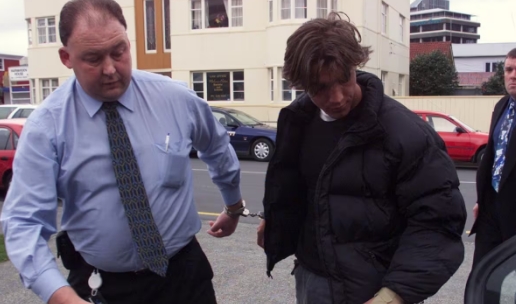
William Jan H. Haanstra, 44, was one of 10 people sentenced in Amsterdam last week, two years after Dutch police discovered seven shipping containers customised into prison cells – and a torture chamber.
My 1999 book also cites the presence of American cocaine trafficker Thomas Winer whose lunch date with Fay Richwhite Investment (the stars of the Wine Box tax avoidance money laundering scheme, who fled to Switzerland at the end of the 1990’s) which saw a denial from Fay Richwhite of every having met such a person. Followed 24 hours later by death threat to my publisher 24 hours before the book was printed at a time when the only parties who knew Winer was in my book were myself, my publisher and Fay Richwhite Investment. Meanwhile the bulk of 2024 has seen this author examining a similar operation to the Wine Box tax evasion files in relation to files kept in Niue in the 1990’s by another New Zealand merchant banker Geoffrey Wilding who like the Fay Richwhite had a plethora of middlemen connection to Mexican cocaine traffickers and Hells Angels.
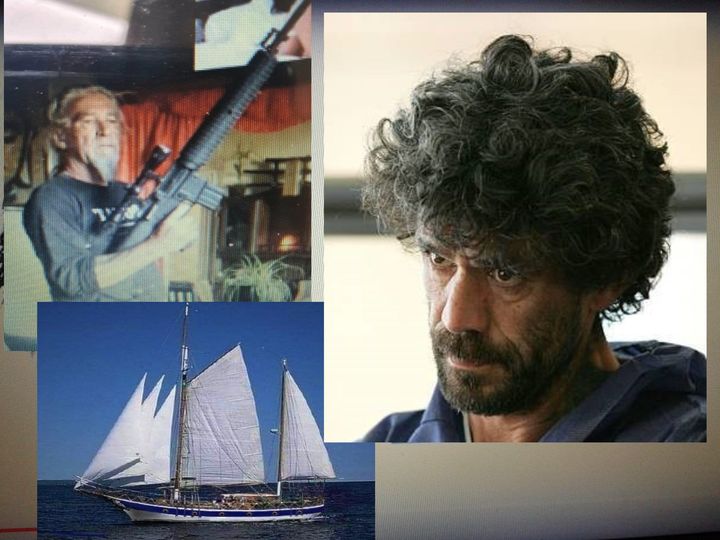
But never mind because there also the case of Hamish Thompson and Fiji Swiss national Valentino Fries trafficking drugs between Fiji and New Zealand and Yacht Safari Fiji at least one member of that syndicate Michael Wallace was a convicted rapist in a North and South article. Though attempt to link the Fries Hamish Wallace syndicate to the Watson case run into issue of timing and ownership of specific boats such as the Lone Wolf (sunk deliberately then raise then blown up). And assuming declaration are correct would seem not to fit the timeline. Though this author now has a file which suggest Thompson crew were involved and is going through the claim to verify or reject it claims which will examine in the next issue of the Shipping News. One of these points which suggest that declaration made where not reliable is an SOS was made by a young woman, on the second of January (the day after Ben and Hope went missing), from the call sign Mad Dog used by Wallace. Which has been verified by multiple sources including the Whanganui Coast guard.
The point is Pope claims that any idea of an international syndicate operating in New Zealand was absurd would have most certainly been seemed from the public perspective in 1990 valid. Yet from what we now know, with the benefit of hindsight, the fact is not only was New Zealand at this period involved in a number of significant drug trafficking’s operations, that match what was described in the sounds, but the police where in many cases aware that such operation where occurring. Hindsight not only make Pope’s denial look pretty hallow but it now raised questions on why the police insisted such a trade did not exist when they knew it did?
A police search of the cottage Kerry lived in after he went missing turned up nothing. Constable Nigel Young also searched Cassels’ property but not his house – something Dylan remains critical of. In a “brief” search of the Galerna, Young found two rifles in a lockable cabinet in Kerry’s cabin on the boat. A shotgun was later reported as missing by Cassell which help add to the picture Kerry had taken his own life despite not being reported when he initially vanished. Police would take away Kerry’s laptop, the laptop which Swan the IT savvy fraudster had borrowed without permission. This led to an agitated Coplestone begging for it to be returned. On March 12, she contacted Constable Young and asked for him to return Kerry property to her, claiming Kerry (who was then missing) would not be happy that the computer had been taken and he would come home and hurt her.
Young would write in his notes she said, “what are we going to do when she is found dead on the floor or swollen and covered with maggots”. Coplestone was “not happy”, it had been taken he recorded, and wanted to know what Young would do to protect her. However, Coplestone is alternatively on record as saying she didn’t think Kerry would ever hurt her and had never hurt her in the past. Police apparently looked at the computer’s browser history but did not have it forensically examined for possible clues on Kerry state of mind or other motive which might explain his disappearance. Oddly the fact that Galerna had Swan already being noted in several other missing person cases or high-profile cyber fraud cases seemed not to concern the police.
Dylan also points to an inconsistency in what Coplestone said about Kerry saying “he” would go to get fish and chips. According to Blair’s sister Rochelle’s statement, Coplestone had told her they “might” go. Dylan believes this difference is significant because it could show Kerry wouldn’t go without Coplestone, and was instead taken against his will. The coronial inquest explored various theories, including that Kerry died by suicide. Yet aside from a shotgun reported missing (later on) from Cassel property, his speculative jealousy in relation to Swan and Coplestone no motive is offered, and the Blair family have never supported that theory. On the contrary they point out Kerry had booked airfares and accommodation to go to a family wedding in the North Island and had been looking forward to it, his daughter Rochelle and brother Peter both told police.
Cassel said Kerry seemed fine. Copestone says he was depressed.
Much of the investigation would then focus on his relationship with Copestone and Swann own relationship with Copestone.
During the inquest the Blair family accused Cassels and Swann of being involved in Kerry’s death. However, the Coroner initially prohibited reporting the allegations, but suppression orders were lifted in 2018. Eventually the coroner ruled that Kerry had died but the immediate cause and circumstances of his death remain unknown.
But what case cases like Smart Hope and Blair do prove is;
One: there remain major issues with the police IPCA, especially in relation to the Dunedin police authorities. And a seeming eagerness not to investigate major signs of a massive scale of organized crime with money laundering or trafficking links. And it significant to note here the proof come via the massive paper trial that accompanies the fleet of aircraft, luxury vessels (some used to transport drugs) and properties part of a well-established sophisticated network used to launder billion in illicit earnings. All of which have a clear and trackable footprint through New Zealand financial markets. Footprints that where routinely ignored by New Zealand’s top law enforcement for more than 30 years and only acted on until they began receiving offshore attention due to events in the northern hemisphere.
Two: the profit of crime where routinely used to buy and selling of properties and other luxury items again leaving a significantly sized forensic footprint that remained undetected by authorities. Large scale crime with real life implications on ordinary New Zealanders in terms of implications on housing and society democratic fabric but which local police commander feared to investigate for upsetting their records. So, while Cassell has now passed away and the question of where the bodies of Kerry, Hope, Smart, Richard Rusbatch’s and its believed a gruesomely long list of other seamen, with links to the underworld and other young blond women (potentially including Jessica Boyce (2019) Melissa Deyell Ewin (2023)), are likely to always remain an eerie unsolved mystery, the paper trail proving an established white collar crime syndicate exist. One with its roots in the Mr Asia drug cartel of the 1970s remains — despite the lack of political will power to investigate the upper echelon of white-collar crime.
The mountain of forensic evidence proving this statement now includes thousands of nominee’s front firm’s company details, lease to buy or rent pushing documents, and leaks such as the Paradise and Panama Paper (which cites NZ banks more than 60,000 times). Records that repeatedly document Rob Pope, senior officer in charge of the Hope Smart case, statement that the idea of their being large scale drug ring operating in the South Island being “rubbish” is itself not only rubbish but proof that more transparency and accountability is required of elements of the CIB. Those who continue to operate with numerous red flags that include no less than the factors which show how the Fiasco Squad may have also blown the chance to prevent the death of 51 people killed at the Christchurch Mosque in 2019. It is a given certainty that if this paper trail was given greater attention than it received to date there remain plenty of more Michael Swann’s and other illicitly funded white collar whales out there to catch.
Moonlight Diaries May 23.
GOLD WARS
Iran’s President Ebrahim Raisi, who died in a helicopter crash in Azerbaijani, sought to unite the Global South against “Western imperialism”. He joined BRICS, advocated de-dollarization, supported Palestine, promoted a “Look East” strategy toward China and Russia, and allied with Africa and Latin America. Iran was actively participating in initiatives under Russia’s leadership in BRICS, with the two countries working towards creating a single currency for the bloc, Iranian Ambassador to Russia Kazem Jalali said on Thursday, 16 May.
De-dollarization fears don’t match reality argues commodities expert Jeffrey Christian, the founder of CPM Group ex World Bank, United Nations, International Monetary Fund, pointed to the fact the US dollar was still in demand. Practically “no one is phasing out the dollar for trade or foreign reserves” he said. In contrast the morning feed also stated The Association of Southeast Asian Nations (ASEAN) countries were looking to promote local currencies for trade and ditch the U.S. dollar for cross-border transaction.
So, what’s true?
The raw stats of the XAU USD traded at $2,418 (down 0.28%), after reaching a high of $2,433. Ergo even though gold seen as a “hedge” for inflation, investors remain reluctant to give away profits from the core US stock market. Translated everyone knows gold is undervalued but no one wants to be the first to jump. But jump it will.
Speculators talk of gold hitting $27,000, an ounce by 2026 – which would be the bubble bursting point. Assuming the government did not stop into regulate which might be a factor considering the impact such a rally would have on hyperinflation.
A fact not lost on Putin, Bejing or the Whitehouse. Gold is the spear tip on a vast ugly economic battlefield every bit deadly as having uranium rounds fired around the breadbasket of the planet.
For the past 30 years I have written and tracked the illicit arms gold and money what today has become known as the Azerbaijani Laundromat. It is I believe the core of what we know today as ‘The Panama Papers’.
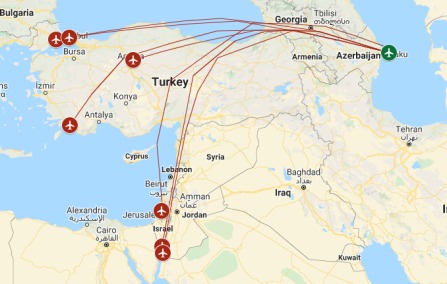
Azerbaijan-Armenia conflict: How Israel and Turkey became strange bedfellows — When Israeli-Turkish military cooperation cooled, the Israelis turned to Baku. Now Nagorno-Karabakh has thrown them all together…At least four Ilyushin Il-76 planes, operated by the Azerbaijani cargo airline Silk Way (linked to Simon Spitz see below), which serves Baku’s defence ministry, have landed and taken off from the Israeli Uvda military air base in southern Israel.
According to flight regulations, that is the only airport from which planes loaded with explosives are allowed to take off…Erdogan reduced Turkey’s relations with the West and strengthened ties to Qatar, the Hamas movement and Muslim Brotherhood branches across the region. Meanwhile, it is involved in civil wars and military or intelligence interventions in Syria, Iraq, Libya, Yemen and Somalia…To cover and balance some of the rising cost of the weapons, Israel buys oil from Azerbaijan.
‘How Family that Runs Azerbaijan Built an Empire of Hidden Wealth Documents’ peels away three layers of secret ownership in a conglomerate and leads to gold mines and overseas real estate.
In 2019 Aivar Reha was among a spate of former VTB Russian bankers linked to a ‘Russian’ money laundering and is found dead In Estonia. The missing former chief of Danske Bank in Estonia — linked to the sale of WMD technology to rogue actor –was at the center of a 200 billion-euro ($220 billion) money-laundering scandal involving Russian money, was shortly after found dead from gunshot wound in an apparent suicide.
The story broke in March 2017, after the Estonian branch was mentioned by Danish newspaper Berlingske in connection with the Russia and Azerbaijani Laundromat oil for guns money-laundering operation.
This also has overlaps with the sinking of MV Estonia and rumors of an illegal arms trade including nuclear materials such as the ultra-rare and ultra-expensive substance Osmium 187 a nuclear by product Prok Bank NZ (a Bank owned by Russian mobster NZ politicians and ex Fonterra executives) boasted it specialized in.
The main shareholder of VTB is the Russian government who own 60% remaining shareholding Qatar Holding LLC and the State Oil Fund of the Republic of Azerbaijan (SOFAZ) and commercial bank China Construction Bank (Directors include former New Zealand PM Jenny Shipley) also hold shares. (Author’s Note (AN) 1).
Two years earlier September 4, 2017, the Danish newspaper Berlingske and the Organized Crime and Corruption Reporting Project (OCCRP) revealed $2.9 billion of suspicious transactions by the “Azerbaijani Laundromat” (central to Russian (funds which have emerged in New Zealand) through Danske Bank, after the OCCRP reported use of Danske Bank by the far larger “Russian Laundromat” in March 2017.
Many of those ‘oil for guns’ terror accounts have washed cash though New Zealand banks using methodology familiar to anyone who has studied the Winebox or Gang of 20 affair active in New Zealand.
And this is also true of those New Zealand interests later involved with the interconnecting Panama Paradise, Pandora Papers and Azerbaijani Laundromat Guns for Oil networks. (See ‘Israel’s State-Run Aerospace Giant Contributed to Azerbaijani Laundromat/ Jet field Networks’ was founded in 2009 in New Zealand).
I have witnessed West and East woo oil despots in the bid to secure hard commodities. So, technology from the Israeli military complex, built under the banner of national security, financed kiwis innovation, used to build weaponized drones which then got sold to Turkey. Turkey, a NATO member, in turn traded sanctioned Russia gas west wards as it bartered weapon technology to Qtar and Iran which more than likely passed that technology on to Hamas Iran or North Koria. War drives debt and debt drives inflation which parasitic speculator thrive on. This is the dirty little hypocritical secret that Daphne Caruna Galiza gave her life to expose.
Why?
Inflation drives the shift into gold by Westen Central Banks and the BRICS alike for wealth preservation purposes.
Put simply he with the most gold bars wins. And too bad for all the little people who get caught in between this gold bullion arms race.
RIP Daphne Caruna Glaiza.
SPOOKY DOWN UNDER.
Have you heard of H.P.Lovecraft? The famous American horror writer?

Did you know that one of his most famous stories – ‘The Call of Cthulhu” (1926) starts off in Dunedin (or more likely, Port Chalmers) when a ship called ‘The Alert’ is towed into port with one dead man on it and another who has gone mad after seeing something terrible on an uncharted island to the north?
An expedition is launched from There to discover the truth. The Alert is a heavily armored steam yacht manned by “a queer and evil-looking crew of Kanakas and half-castes,” in addition to being members of the Cthulhu cult. The crew of the Alert was slain in retaliation for attacking the schooner Emma, and upon being discovered by the Vigilant, the Alert was towed to Sydney, Australia where it was sold for commercial use. (HPL: “The Call of Cthulhu“)
This story in turn leads to a whole series of other tales by Lovecraft (and other mystically inspired authors) about the old gods (including Cthulhu) trying to make a comeback here on earth! A biproduct of the era when Darwinism was challenging the church hegemony on spiritual belief and Eastern inspired new age mysticism was increasingly popular in the west.
Another weird real life Cthulhu Dunedin occult link is Iona Church in Port Chalmers Dunedin. Its namesake and highly esoteric glass windows and ‘Devils Pentagram’ ( The Eastern Star which both the female branch of Freemasonry and the Ratana Church heraldry is based on), which is a nod to Whare Ra the NZ branch of the Golden Dawn.
Furthermore, Lovecraft and Crowley used to send messages to each other in code.
The famous cult, linked to occultist Alister Crowley, went on to found Iona Girls College in Havelock North as means for the occult to groom young ladies into powerful families. Its old girl’s network which includes the sister of former Wellington mayor Michael Fowler and former Christchurch mayor Bob Parkers Lady Joan Anne Nichols whose own interest include the occult today.
At its heyday the Aotearoa branch of the wiccan cult had as member a brigadier general governor general and four presbyteral archbishops– below is replica of the temple built under their headquarters designed by top Architect firm Chapman Taylor complete with the sign of the mast mason on it side a symbol shared by the homes of stone cutters Fletcher challenge who built the secret WW2 tunnel of Craftcroft in Cashmere Hills that links to several mansion around the sign of the Takahe which is living museum to esoteric symbolism beginning with it famous stain glass windows.
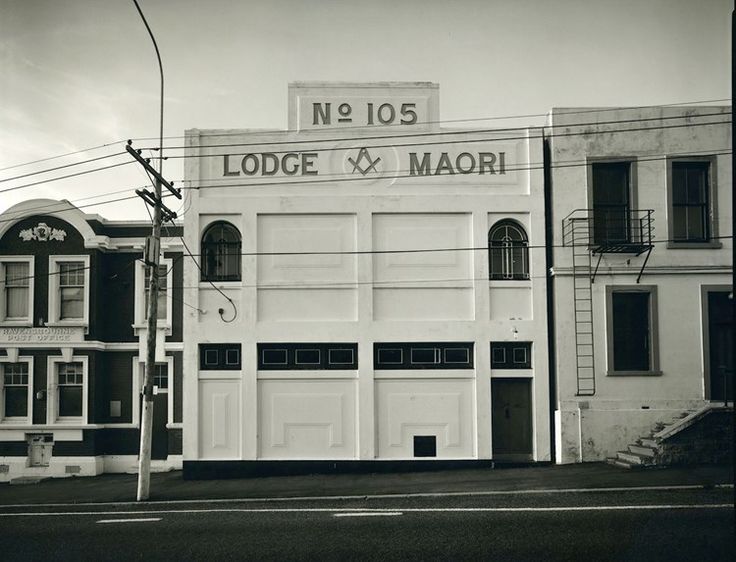
Then there was Māori Lodge NO5. Ravensbourne (a term used to describe the boundary between several sets of parishes), whose member Henry Bingham of Fletchers I believed carved the Otago University follies. In 1932 the governor-general, Lord Bledisloe, who opened Lodge N05. became the Most Worshipful Grand Master of the New Zealand Masonic Lodge. Henry Sydney Bingham built the marble stairs in the Otago Museum and Regent Theatre.
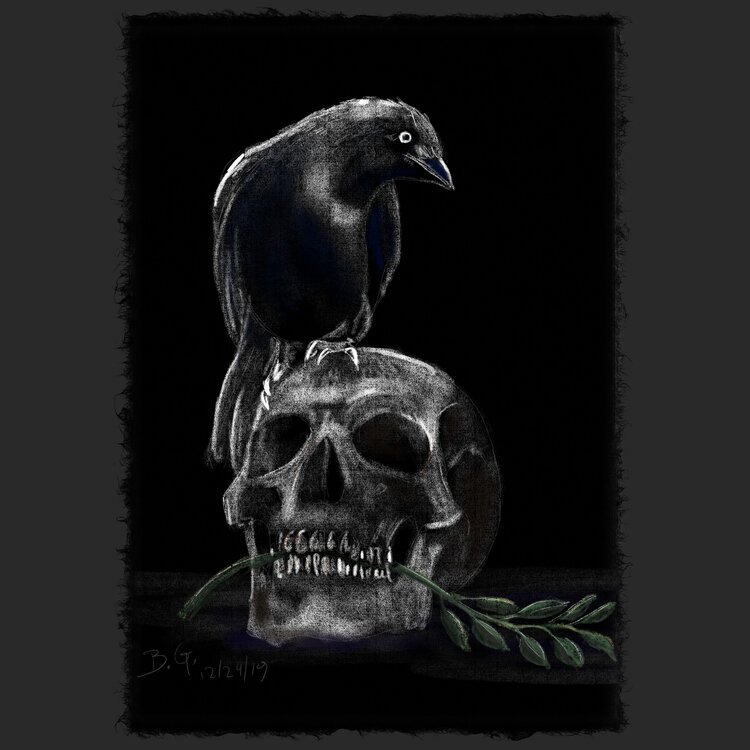
Another Ghoulish Dunedin case with tone of HP Lovecraft occurred back in January 1972, when art curator Peter Entwisle as a 23-year-old student was charged in the Dunedin Magistrates Court with improperly interfering with human remains, to be specific the skull of William Larnach the creator of Larnach’s Castle.
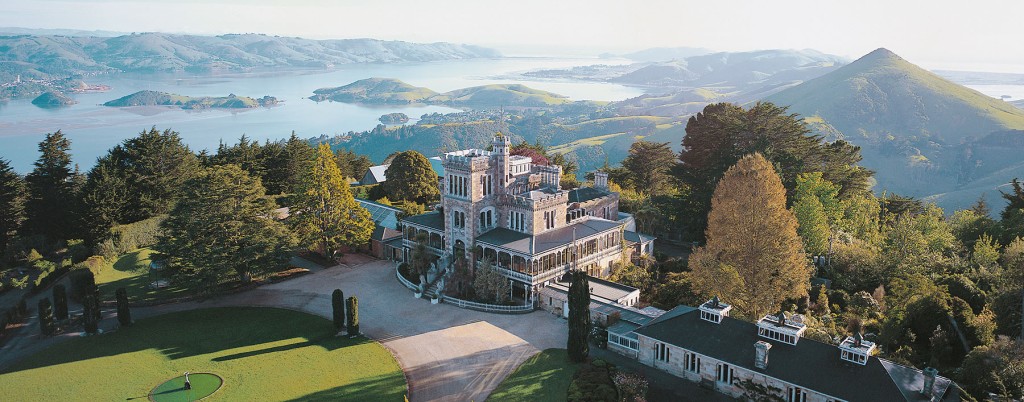
According to reports in both the Otago Daily Times and the Evening Star, Entwistle was not represented by a lawyer, pleaded guilty, was convicted and remanded for a probation report and sentencing. The police, acting on information received, had found a skull in his flat. Entwisle said it “was readily identifiable as Larnach’s by the gunshot wounds and it had been given to him about a year earlier by a friend, whom he declined to name”. As a graduate anthropology student he had an academic interest in skulls, he said then.
However, what is not widely known is that the case was dismissed on January 31. Entwisle was then represented by Ron Gilbert and changed his plea to not guilty. According to reports in the Otago Daily Times, magistrate Mr J. D. Murray said a corpse, or human remains was not something that could be stolen so Entwisle could not be charged with receiving.
Oddly the crime acts 150 ‘Misconduct in respect of human remains’ notes “Everyone is liable to imprisonment for a term not exceeding 2 years who— (a) neglects to perform any duty imposed on him or her by law or undertaken by him or her with reference to the burial or cremation of any dead human body or human remains; or (b) improperly or indecently interferes with or offers any indignity to any dead human body or human remains, whether buried or not“. But what can we say Dunedin lawyers have long had an interesting interpretation of New Zealand law especially when it comes to their alumni mates.
As for Entwisle “Although he had kept the remains, occasionally polishing them and showing them to friends, he had not mutilated them, so there was no improper interference”. The rest of Larnarch’s body might have felt otherwise. The concreting over of the crypt in 1973 stopped further interference with the coffins but certainly did not stop vandalism to the building itself. The original obtain-er of the bones was known as “Dr Voodoo” the child of another of Dunedin’s prominent privileged family who went on to be a high-powered lawyer in Hong Kong.
And of course, Dunedin with Scottish Rite Masonic names including St Clair and Ravensbourne has always had a hard on for Robbie Bournes the Scottish Bard who became immensely popular in 19th-century Scotland and then in Otago New Zealand. Today the Burns lecture hall at Otago University (a place crawling with in-your-face masonic symbolism) is named after the poet. While a statue of the poet, constructed in 1887, dominates Dunedin Octagon*1 with Burn’s uncle Thomas Burn listed as Dunedin first spiritual leader.
*1 On a location also located originally above underground toilets with Dunedin underground tunnels complex said to be so vast that if you know what you where ding you could cross from one side of the city to the other completely underground tunnels going down in some locations such as the former Fortune Theatre North of Octagon going down seven floors
In 1861 Mr. Burns received the diploma of Doctor of Divinity from the University of Edinburgh. In 1866, on the formation of the synod as the Supreme Court of the Church, rendered necessary by the increase of ministers throughout Otago and Southland, and the formation of several presbyteries, Dr. Burns presided as first Moderator. And yes their is Burns HP Love Craft link Till A’ the Seas” is a post-apocalyptic short story by HP Lovecraft and RH Barlow. The title is a reference to the poem “A Red, Red Rose” by Burns.
Burns became a Freemason after joining St David’s Lodge No. 174 in Tarbolton in 1781, the poet taking his Freemasonry very seriously, joining a total of six lodges during his short life. By 1784 Burns was ‘Depute Master’ of St. James’ Lodge No. 178 (now No. 135), which also met in Tarbolton. He entered into the Royal Arch in 1787, became a member of St. Andrew’s Lodge No. 179 in Dumfries, and also became poet laureate of Lodge Canongate Kilwinning No. 2.
But if you want to sleuth out Burn’s occult connections you best to skip across the ditch to Brisbane where I found some truly Cthuluequese Burns images on the side of statue honoring Burns and a bunch of tunnels across the road and building full of cyber spooks (in this case the spooks are of the spy kind not the variety which need ghost busters) and some in your face pretty demonic banking sculpture and out their gargoyles near-by.

To find the answer to what all the demons and witches on this statue had to do with Burns I looked up Renegade Arts’ Robbie Burns: Witch Hunter, who modern take on Scotland’s favorite son taps deeply into twist of Gordon Rennie and Emma Beeby brings him out of the 18th century and into the 21st. It focuses on Burn’s poem ‘Tam o’Shanter’ the story of an unfortunate ne’er-do-well who, after a rousing night at the local pub, is attracted by a clamorous din at an abandoned church.
Upon investigation, Tam is transfixed by the sight of a witches’ gathering, celebrating a dark mass under the musical direction of Satan – “Auld Clootie” playing the bagpipes. Tam cries out – in near-rapture, at the sight of a fair witch in a short shirt dancing seductively (“Weel done, Cutty Sark!”) and is then forced to flee for his life after they give chase. Fleeing for the safety of a running stream (the Ravensbourne) he manages to reach it, for faery lore tells us that spirits and the servants of evil cannot abide running water. Tam lives, though his horse’s tail is savagely ripped off by one of the chasing demons.
The park is built on a host of tunnels next to a Catholic church plagued by sinister scandal and an underground fortress – and today is a partial home to modern day cyber spooks.
In 1888, the President of the Brisbane Burns Club, Alderman Galloway, contacted the President of the Queensland Scottish Association, Sir Thomas McIlwraith, to suggest their organisations combine forces (and funds) to erect a statue of Robert Burns in Brisbane. It was not until 1929 that the statue was finally erected in Centenary Place and was dedicated to Brisbane by the Burns Club. The Brisbane Burns Club was a men’s club. The statue includes the text “My love is like a red, red rose, that’s newly sprung in June”).
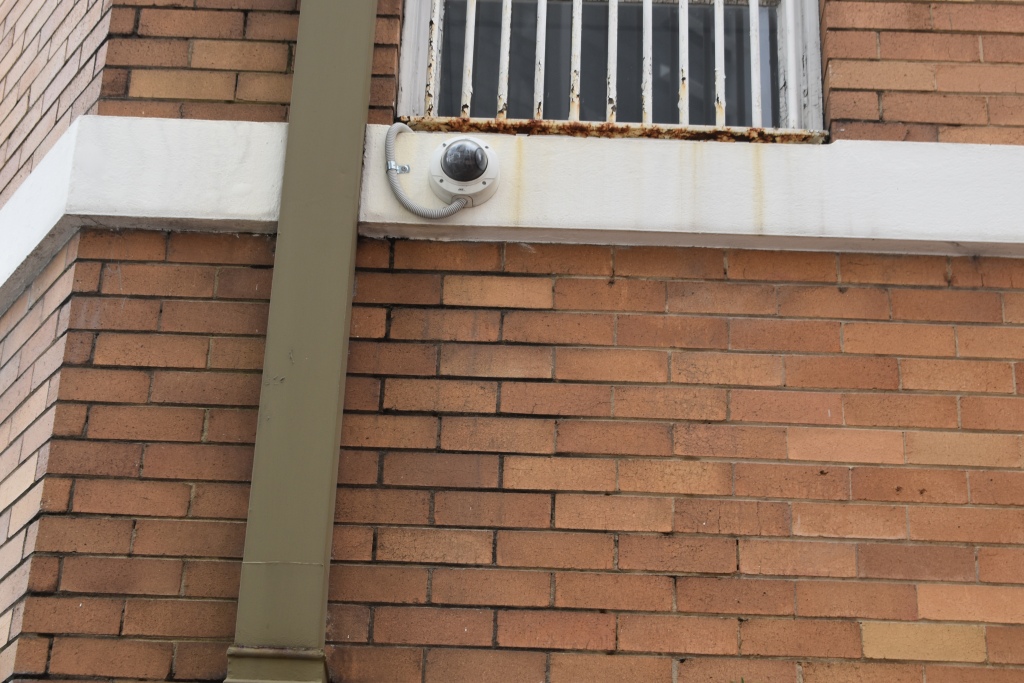
As for the tunnel?
I found on the opposite side of the road Datacom. Datacom it turns out sits on an extensive tunnel network built in secret by stone cutters under Brisbane (just like Craftcroft) during WW2 when the University of Queensland was then used as a strategic command center.
By going down to the underground lecture theatre (level 1, east wing of Forgan Smith, take the stairs near Merlo) you will find a plaque describing the former use of the room.
Today Datacom clients include Australian Customs, Australian Border Force and CrimTrac, the Department of the Environment, the Australian Taxation Office, and Airservices Australia and Australian Department of Health. It first acquisition was Fletcher’s Computer Bureau. In NZ its clients include the GCSB cyber spies
THE MOON LIGHT DIARIES — May 14TH (WELLINGTON CONFIDENTAL)
This morning proved frosty but me and Smith moved some more timber stacks to get circulation going as the Wolf Pack looked on non-committedly.
A quick commute to town saw my jobs get sidetracked by a mates post on Fake book regarding Haining Street and area I knew well when I worked in Wellington working for Cavalero Remiro Briscolini the Fawlty tower of the Italian cuisine industry whose legendary restaurant sat on Tory street in the heart of the old Opium district with its distinctive mural which gave away Remiro roots as art history teacher with a sly nod to the anti-nucellar movement. The mural depicting Albert Einstein looking out the window of Venicia villa into a courtyard as children play with bird cage containing a Tomahawk missile. Or it did, following Remiro death property developer tore down the mural and stick up a shiny chrome monstrosity.
Next door was the Garibaldi club Wellington possibly the oldest in Southern hemisphere. Few Kiwi will get it named after Freemason Giuseppe Garibaldi quite possibly one of the most passionate and active freedom fighters of the 19th century. His Propaganda Uno red shirted revolutionaries is the source of the famous red shirts worn first by the 49 miners of California then the mining town of Deadwood and Kodiak before becoming a symbol of miners solidarity in places like Bendigo and Ballarat and eventually Blackball on the West Coastwhere strike 1908 which formed the Labour movement in New Zealand in 1916 before Labour threw in the red jersey of socialism for the red sock of Fay Richwhite’s Neoliberalism and the pro corporate nationalism of the America Cup and it wealthy patrons.
The term Redshirts and Garibaldino were also used to describe Italian volunteers in subsequent international conflicts, including the Garibaldi Legion of Poland organized by Garibaldi’s son Menotti during the January Uprising (1863); the Redshirt volunteers led by Garibaldi’s son Ricciotti that fought with the army of Greece during the Greco-Turkish War (1897) and the Balkan League during the First Balkan War (1912-1913); the Garibaldi Legion who fought for France in World War I (1914-1915); the Garibaldi Battalion who fought for the Republicans in the Spanish Civil War; and the Italian antifascist partisans in World War II

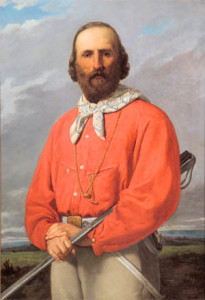
Born in Italy in 1807 as Napoleon was spreading “enlightenment” ideals across Europe Garibaldi became deeply inspired by the rising tide of human liberty. He went on fight in almost every revolution and struggle for freedom from South America to his native homeland. What he is remembered most, or at least so it goes according to official Masonic history, “is leading the hearts and minds of the Italian people to unity, turning a loose collection of small states into a United Kingdom of Italy. It was this innate passion for human liberation that led Garibaldi to Freemasonry”.

Nearby is the The Chee Kung Tong Chinese Freemasons (Wellington Chinese Masonic Society Inc) building. The lodge was established in 1907 as the New Zealand branch of the Hung League. The League itself was an offshoot of the Yee Hing Secret Society a combination of the Yee Hing Company and the Chinese Masonic Society who were both strong supporters of the republican cause in China with the hall in Mary Street Sydney served as a center for many pro-Republic activities in Australia from where the international Chinese movement, first founded in the 17th century to overthrow the Manchurian Qing Dynasty spread out. In Wellington the movement first emerged as the Chee Kung Tong (also called Gee Kung Tong Society located in 81 Vivian Street, and was later located at 23 Frederick Street, today it is one of only three remaining buildings from which the original Chinatown which remains standing today.
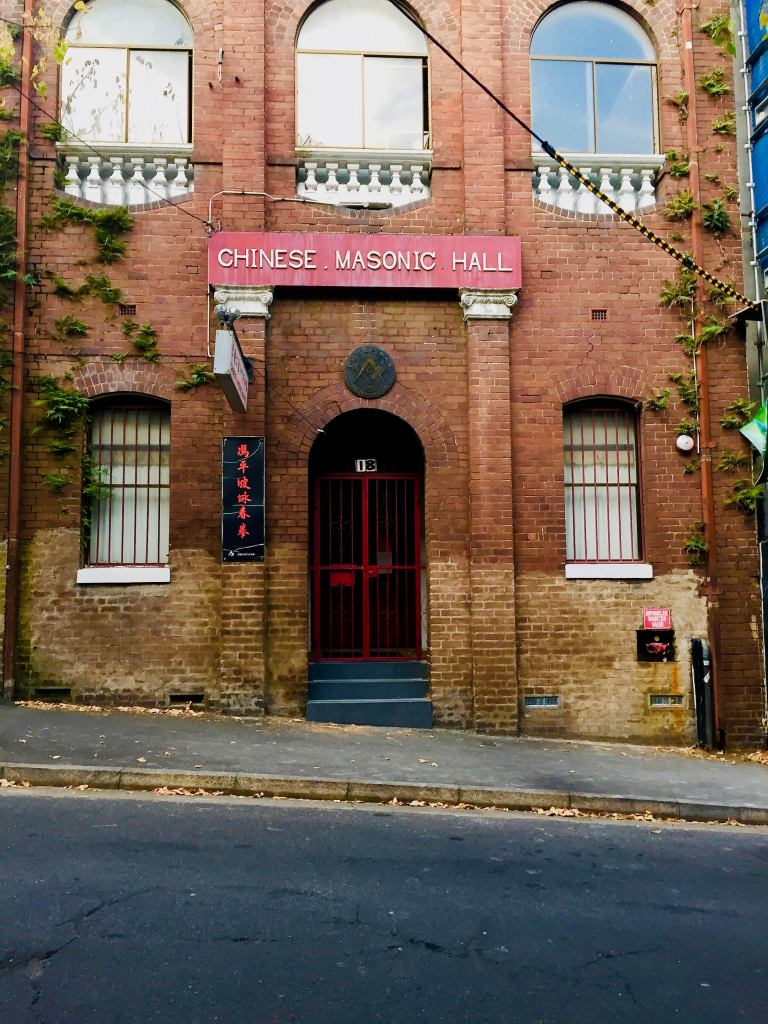
The Chee Kung Tong Chinese Freemasons (Wellington Chinese Masonic Society Inc) was established in 1907 as the New Zealand branch of the Hung League (itself an offshoot of the Yee Hing Secret Society), an international Chinese movement founded in the 17th century to overthrow the Manchurian Qing Dynasty. Chee Kung Tong (also called Gee Kung Tong Society[2]) located in 81 Vivian Street Wellington New Zealand, and was later located at 23 Frederick Street, this is one of only three remaining buildings from the original Chinatown which remains standing in Wellington today.
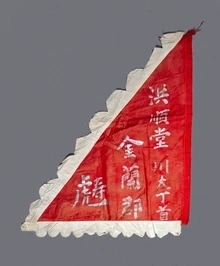
The building was opened on 10 October 1925 following a procession (for which permission was sought) from 81 Vivian Street to the new hall, complete with fireworks and dragons with the gala event attended by “the Mayor and Archdeacon of Wellington, a cabinet minister and a ‘high office bearer of the Wellington Grand Lodge Masonic Order’”.
The Chee Kung Tong in Wellington was reportedly known for being philanthropic, and membership appealed mainly to “average Chinese”, including market gardener merchants and again miner who may have been one of the first tiers of Chinese society to enter the angiocentric masonic based friendship societies. Senior office holders (meaning Pakeha) would often speak at events of significance to the Chinese community, including Double Tenth celebrations, such as that held in 1922. The New Zealand branches of Chee Kung Tong was formally disbanded in 1975.
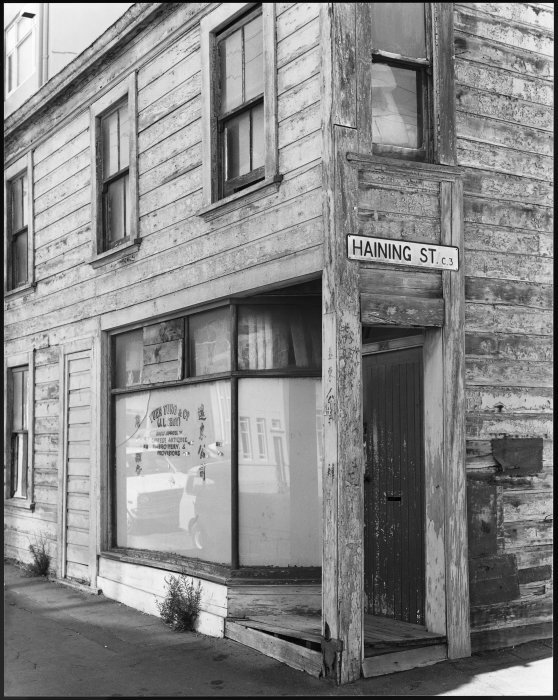
Running off Haining Street Wellington New Zealand, along with nearby Frederick Street, the heart of early Chinese community in Wellington then (Often referred to as the “Celestial Quarter”, “Chinatown” or “Chinese Quarter”). Members of the Chinese community in Wellington would call the street Tong Yan Gaai (唐人街), or Chinese People’s Street, although this is in fact a Cantonese term, used generically to refer to ‘Chinatown’. The area is today considered by the Wellington City Council today as a significant to Wellington’s heritage.
Yet back in the 1900s Haining Street reputation was so not respectable in particular media painted lurid images of the dangers of the Chinese plague when on 30 April 1910, Jim Wong Sing was arrested, charged with seriously assaulting Young on Haining Street. In this era, it would be associated with gambling, opium and alcohol sales, which lead to regular police raids and was the scene of the infamous murder of Joe Kum Yung by Lionel Terry on 24 September 1905.
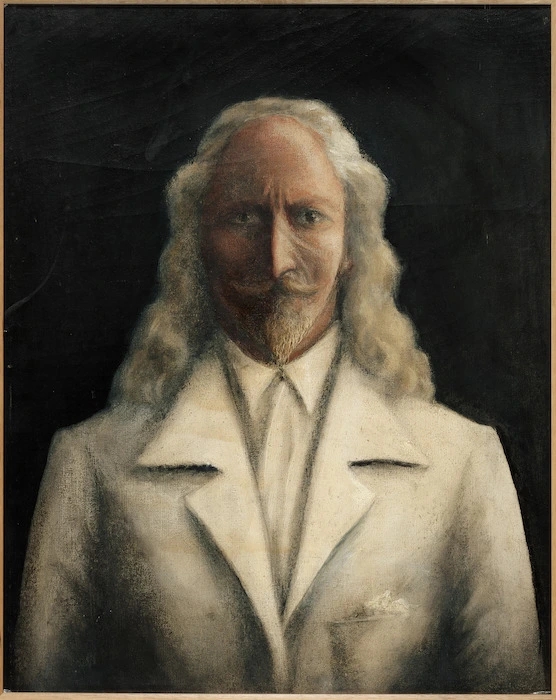
Edward Lionel Terry, aka the Earl of Sea Cliff was born in Kent in 1873 (35 years after James Vidgen was dismissed from his job as Postmaster and began make his trek to the treacherous Cape York). Terry was the son of Edward Terry and Frances Terry (nee Thompson). His father was a prosperous corn merchant in Kent, and later managed Pall Mall Real Estate. He was educated at Merton College in Wimbledon. Edward had worked initially for the West Indies Gold Mining Corporation in London and then joined the Royal Regiment Artillery in 1892. After his father secured his discharge in 1895, he became involved in successive itinerant occupations in South Africa, USA, and Canada before coming to New Zealand.
In the West Indies Terry had climbed Mount Pelee in Martinique before it erupted. he then spent weeks exploring the interior of the Dominca, producing the first map of it. He would serve in the mounted police brigade in Bulwayo Rhodesia, fighting against the Matabele in the Second Matabele War, taking part in fifteen engagements and being wounded twice. He took part in the ill-fated Jameson Raid, on 29 December 1895.
The raid against the South African Republic commonly known as the Transvaal) was carried out by British colonial administrator Leander Sytarr Jameson, under the employment of Cecil Rhodes. It involved 500 British South Africa Company police, who where basically colonial mercenary paramilitary forces launched from Rhoidesia over the New Year weekend of 1895–96. Paul Kruger for whom Rhodes had great personal hatred, was president of the South African republic at the time. The raid was intended to trigger an uprising by the primarily British expatriate workers (known as Uitlanders) in the Transvaal but it failed.
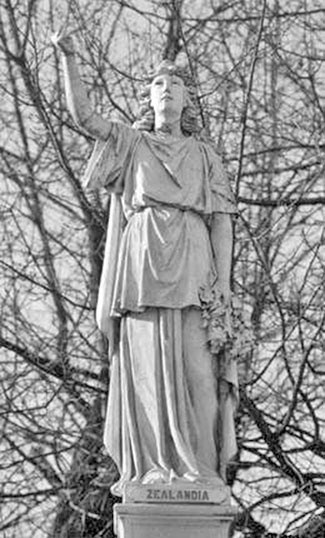
The results included embarrassment of the British government; the replacement of Cecil Rhodes as prime minister of the Cape Colony; and it strengthen Boer dominance of the Transvaal and its gold mines. The withdrawal of so many fighting men left Rhodesia vulnerable. One of the key factors that led, only months later, to the Second Matabele War. The raid was a contributory catalyst of the Second Boer War which saw New Zealand Australia and other colonial forces often compromised ironically of indigenous forces join England in it failed suppression of the Boers.In Canada Edward Terry served as the secretary of a miner’s union and it was hear he became outraged at how the Priemer of British Columbia James Dunsmir a mine owner was hiring scab Chinese labor for low wages in preference to Caucasians. He was also upset by the mine owners of South Africa importing Chinese coolies to to work for low wages ahead of Caucasians. Like Samuel Griffith Terry was strongly in favour of the white working class of the British Empire and he believed (as did contemporaries of the age like Doc Holiday) that the British government, capitalists and Jewish financiers were destroying the Empire’s future by using the working class like slaves, and by hiring non-white labor. Incensed at this Oriental Jewish conspiracy Terry departed Canada for Australia via Hawaii, and after some time there moved to New Zealand.
In New Zealand, Terry went to work for the Department of Land Survey in Auckland, before he tried to establish a horticultural market garden north of there. In 1903, he worked as aa Taihape bush feller, north of Palmerston North and Feilding, before returning to work for the Department of Lands and Survey as a surveyor, based in Mangonui, Northland in 1905.During his early years in New Zealand Terry would write letters and poems to various publications espousing his views on labor, capitalism, the empire and race. He also wrote and privately published the white supremacist manuscript The Shadow while in New Zealand. A copy of the original is in the State Libary of Victoria in Australia. His text called on King Edward to defend his empire against the capitalists and against Chinese and East Asian immigration which he accused the capitalist of using to undermine the working conditions of the working-class man. From June 1905 he undertook a personal quest traveling 900 km as he trekked from Mangonui to Wellington, distributing copies of The Shadow as he went. Upon reached the nation’s capital in September 1905 the wannna-be Paul Reverie of the South attempted to petition the New Zealand’s parliament to ban any further Chinese and East Asian immigration to New Zealand. The petition oddly enough was ignored so on 24 September 1905, Terry took drastic steps shooting Joe (possibly Zhou) Kum Yung, a Chinese immigrant, in Haining Street, Wellington. The story of Terry’s victim, Joe Kum Yung, is told in How to Be Dead in a Year of Snakes, a book of poems by Wellington poet Chris Tse. Yung, who died later of injuries, according to John Dunmore, was an elderly Canton destitute Chinese former gold prospector, aged 70, who yearned to return to his native Canto and had a pronounced limp as a result of a past mining accident. Terry selected Yung as his victim due to this infirmity. Early on police stated they had had no leads on the murder, and it looked as if they would make little effort to track down the killer. So Terry helpfully submitted himself to the authorities the following day saying: “I have come to tell you that I am the man who shot the Chinaman in the Chinese quarters of the city last evening. I take an interest in alien immigration, and I took this means of bringing it under the public notice.“
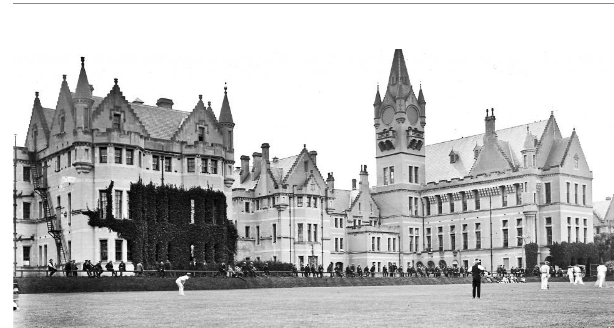
Terry was convicted of murder on 21 November 1905. Originally, he was give a death sentence. The sentence was commuted to life incarceration within New Zealand psychiatric institutions. Over the next 47 years Terry was imprisoned in Christchurch’s Sunnyside then Dunedin’s Seacliff Lunatic Asylum (at the time the largest building built in New Zealand) and Lyttelton Prison. He would later be diagnosed with paranoid schizophrenia but its noted he also showed symptoms similar to syphilis or mercury poisoning. At the time Mercury was used to treat the sores of syphilis vicitims but it did not cure the syphilis. In fact it may have accelerated the rate at which the disease destroyed the carrier minds and sent them into HP Love Craft style madness. That Edward was a little bonkers however did not prevent many followers New Zealanders from circulating a petition begging for clemency on the basis that basically the Duke of Seacliff, as many of his follow began to dub him, might be mad but he had a point. Who says madness not contagious. A 1911 petition on Terry’s behalf claimed that he’d committed the crime, which “arose from an excess of patriotic zeal,” out of impulse, which was “the result of over-anxious thought on the subject of race pollution.” The local Chinese community responded in turn by circulating a counter-petition. Its noteworthy of attitudes that no one at the time bothered to record what its counter argument were. [3]Terry was not always a model prisoner absconding from Sunnyside twice, in 1909 and 1914. Under Seacliff administrator Truby King, he seemed to recover slightly from his mental illness, and was allowed to produce more poetry, paint and undertake horticulture. Over time, he developed messianic religious delusions and later assaulted a doctor who attempted to administer an anti-typhoid injection in 1940, whereupon he was returned to solitary confinement. Terry died in 1952 from a stroke, aged 79. King aside from his work at the asylum is better known for founding Whanua Awhina Plunket Society whose patron and namesake was Lady Victoria Plunket, the wife of the New Zealand Governor-General (he was also Grand Master of New Zealand’s Grand Lodge) youngest daughter of the 1st Marquess of Dufferin and Ava.
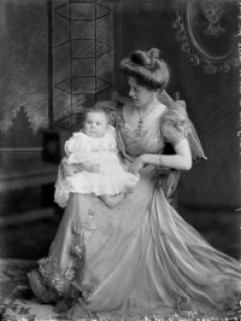
Lady Victoria became involved with the Society, travelling the country to promote its work, and advancing the idea of a professional nursing service for mothers and babies in New Zealand. Plunket pioneers also included Mere Harper and Ria Tikini, both of Kāi Tahu and Kāti Huirapa descent, highly respected midwives and healers, who worked closely with King, to care for the ill in their community.
The Maori midwives helping to deliver Thomas Rangiwahia Mutu Ellison (Tommy), the first Plunket baby, in 1906 who grew up to be a member of the Native Blacks rugby tour and loyal employee to whaler and banker Johnny Jones, who is often associated today with the first use of the Silver Fern. Though a second possibility is Fern House which today sit next to the Dunedin Club (and was original owned by Captain of the Glouster Regiment) before becoming Jone’s town house located next to the current location of the Dunedin Masonic Lodge.
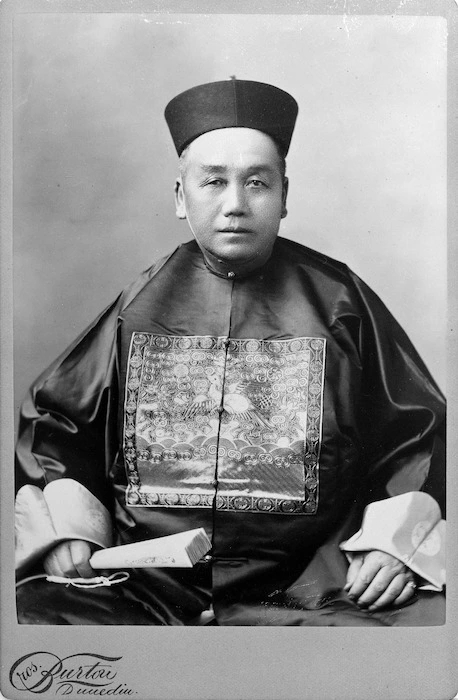
Just down the road from Fern House and the Masonic Lodge is the Sew Hoy building named after the Dunedin overseers of migrant Chinese workers and importers of Opium. Its stands opposite the agents off the Opium based Dutch East Indies Company ‘Bell Tea’ factory.
The Sew hoys made sure Chinese immigrants paid their dues in return for medical social and legal protection and the price of shipping their bones home when they died.
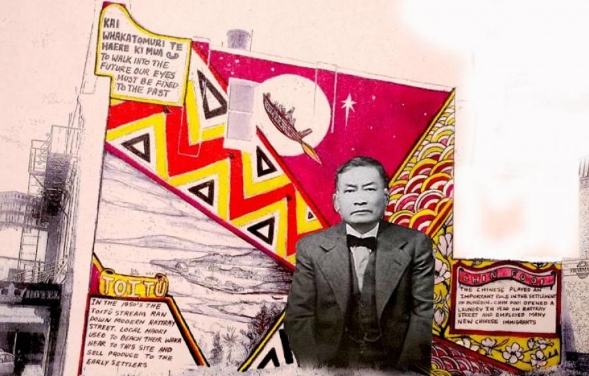
Local legend claims (with uncited sources) that two brothers arrive in Dunedin. from China. When asked their name by immigration one is said to have declared his name Chin the other Sew Hoy.
True or not the Chin’s family went on to form their own significant legacy including brothel night club king pin Eddy Chin (owners of Crown and Sammy’s the home of the so-called Dunedin Sound).
Peter Chin Mayor of Dunedin, part of the Chins extended clan, sat on New Zealand Flag referendum and its Constitutional panel launched by John Key (future partner to Wellington brothel and property developers the Chow brothers) and Dr Pite Sharple of the Māori party. Chin, a regular at the Dunedin casino high roller room, was also Commissioner of Gambling while other member of the extended Chin family in Dunedin retains both strong Ngai Tahu and Mongrel Mob Black Power family ties.
The origin of such prominent New Zealand Chinese Otago family begins soon after their arrival in Otago, when the Cantonese goldminers from Poon Yu (Panyu) and Fah Yue (Hua) counties had founded a benevolent society, the Cheong Shing Tong, to care for elderly and needy Chinese, and also to return their bodies to Canton.
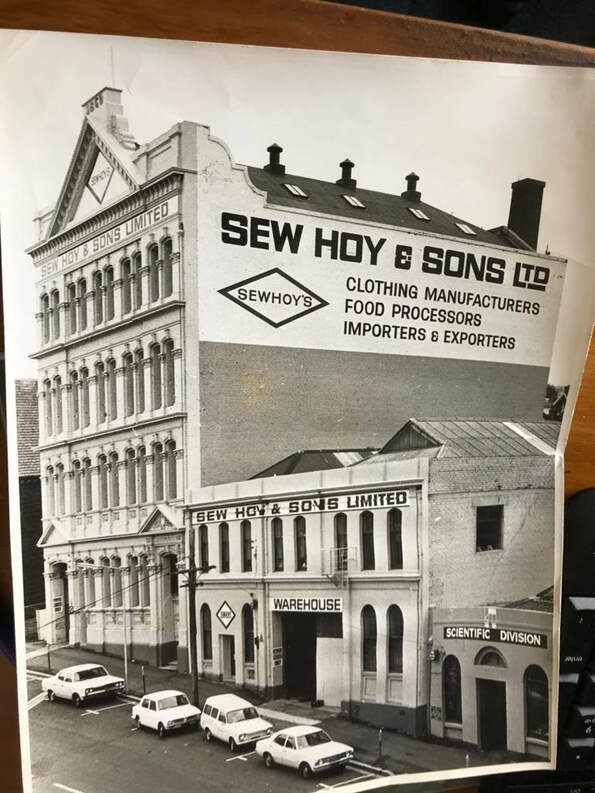 In the second half of the 19th Century, these men formed a living chain of migrant laborers, who sent money back, guided other family members and, sometimes, returned home relatively wealthy.
In the second half of the 19th Century, these men formed a living chain of migrant laborers, who sent money back, guided other family members and, sometimes, returned home relatively wealthy.Choie Sew Hoy was the first president of the Cheong Shing Tong. When the society began its first mass exhumation of deceased miners’ remains in 1883, all the fundraising and administration was run from Choie Sew Hoy’s office at his store in Stafford Street, Dunedin. In April 1883 230 bodies, mainly from Otago and the West Coast, were safely conveyed to China for reburial by the SS Hoihow. Ironically by the time the Cheong Shing Tong had organised the next major exhumation, between 1899 and 1902, Choie Sew Hoy had died (in 1901).
The task would be left to his son Kum Poy Sew Hoy (his successor as the president of the Cheong Shing Tong) to continue overseeing the gathering of human remains from 39 graveyards around New Zealand. The bones of the ‘former friends’ were carefully cleaned, labelled and packed into zinc-lined kauri coffins or body-boxes. A total of 501 coffins were loaded on the SS Ventnor in Wellington. (The total had been thought to be 499 but Nigel Murphy’s recent research in the NZ Archives found the names of at least 501 and possibly 503.)*1.
*1 Folk lore has the orifices of the dead Chinese was fell with melted gold and this led to the theft of one of the coffins – the story remains uncorroborated.
The SS Ventnor sailed from Wellington for Hong Kong on 26 October 1902 but struck a reef off the coast of Taranaki early the next morning. The captain tried to make for Auckland but the Ventnor sank about ten miles off the Hokianga Heads on 28 October 1902. Although three lifeboats got away safely, the fourth was swamped, drowning 13 men, including Choie Sew Hoy’s elderly nephew, Choie Kum Foo, who was one of the body-attendants accompanying the coffins. Searchers found only a few of the coffins washed ashore, and there the matter rested until a remarkable series of events more than a century later. Ever since the recovery of Ventnor coffin has risen and fallen as the joint relation between China, Iwi and Crown rises and sours accordingly.


